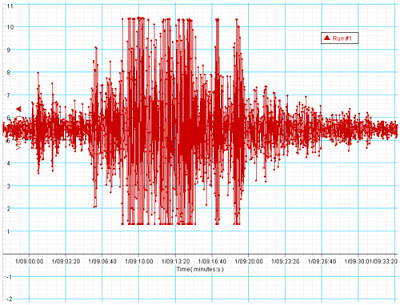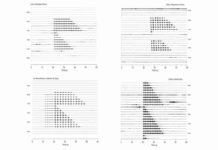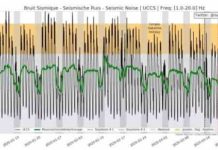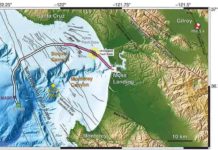
Seismologists studying the recent dramatic upswing in earthquakes triggered by human activity want to clear up a few common misconceptions about the trend.
There is increasing evidence that these earthquakes are caused by injecting fluids from oil and gas operations deep into the earth. These human-caused earthquakes are sometimes called “induced earthquakes.”
A Seismological Research Letters focus section to be published online June 10 addresses some common misconceptions about induced seismicity—the biggest of which is that it is primarily related to oil and gas recovery by hydraulic fracturing or “fracking.” The focus section will appear in the July/August print issue.
Guest editor Justin Rubinstein, a scientist with the U.S. Geological Survey, explains that most of the induced earthquakes felt in the United States are from the disposal of large amounts of wastewater from oil and gas production. The majority of this wastewater is ancient ocean brine that was trapped in rock layers along with gas and oil deposits. Only a small percentage of induced seismicity comes from fracking processes that inject liquid into the ground to break up rock layers to free oil and gas for recovery.
Wastewater disposal from oil and gas operations has increased in the U.S. in the past decade, especially in states like Oklahoma where the amount of wastewater disposal doubled between 1999 and 2013.
“Wastewater disposal is expanding and waste fluids are being injected into new locations. There have been changes in production practices as well, so in some areas there is much more wastewater that needs to be disposed,” Rubinstein noted.
Not all fluid injection causes earthquakes that can be detected or felt, Rubinstein added. Only a few dozen of the tens of thousands of wastewater disposal, enhanced oil recovery and hydraulic fracture wells in the U.S. have been linked to induced earthquakes that can be felt.
The central United States has experienced a surge in seismicity in the past six years, rising from an average of 24 earthquakes magnitude 3.0 or larger per year between 1973 and 2008 to an average of 193 earthquakes of this size every year between 2009 and 2014, with 688 occurring in 2014 alone.
Researchers are also tracking induced earthquakes in Canada, and the current batch of studies suggests that fracking might be more significant than wastewater disposal for causing earthquakes in that country, according to focus section co-editor David Eaton of the University of Calgary.
“There appear to be interregional differences between the U.S. and Canada,” he noted, “but it’s too early to say yet whether those reflect operational differences in the geological site conditions, or if it simply reflects the focus of studies that have been completed to date.”
As research continues in both countries, experts are recommending a more proactive approach to the risks of induced seismicity. A focus section article by Randi Jean Walters and colleagues at Stanford University outlines a possible workflow to reduce pre and post-injection risks at oil and gas sites. The workflow would incorporate seismic monitoring, a thorough understanding of a region’s past and present geology and detailed information on the industrial methods used in an oil and gas operation. Perhaps most important, they write, an ongoing risk assessment would take into account what sorts of resources—from buildings to natural settings—would be affected by seismic activity, and what kinds of seismic activity the surrounding population is willing to tolerate.
Another focus section paper by James Dieterich and colleagues at the University of California, Riverside explores the mechanics of induced seismicity. Their study uses an earthquake simulation program called RSQSim to explore how simple faults with various levels of pre-existing stress respond to fluid injection. Their model is able to reproduce many of the observed characteristics of induced seismicity and relate them to physical quantities such as injection duration and injected volumes. If the simulator can model more complex situations in future trials, it may offer guidance on managing the seismic risks at injection sites and estimating the probabilities of inducing earthquakes.
Other articles in the issue investigate characteristics of induced earthquakes that have been proposed to be different in natural and induced earthquakes, including their ground shaking and faulting styles.
Note : The above story is based on materials provided by Seismological Society of America.










